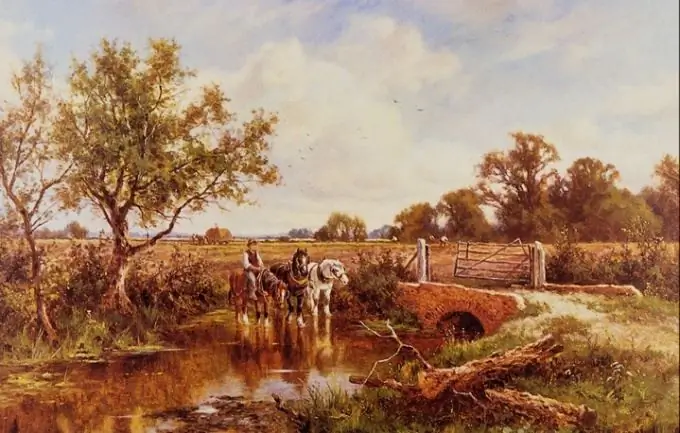A rural landscape is a traditional subject for Russian painting, convenient for learning to draw landscapes. If you have the opportunity to go out of town, you can at any time learn to draw rural landscapes, conveying their unique atmosphere in drawing, and practice this skill more and more.

Instructions
Step 1
First, wander through the countryside to find out which part of the landscape and village buildings is most attractive to you, and what kind of landscape you want to capture. Choose the composition of the picture, sit comfortably so that the entire "frame" that you will sketch is included in the review.
Step 2
Use pencils or watercolors, charcoal, sanguine, and other painting materials suitable for outdoor painting for drawing. It is convenient to use a folding sketchbook for drawing in the open air - fix a sheet of paper or primed cardboard on the sketchbook, start sketching in a neutral tone with thin lines.
Step 3
If you set yourself the task of conveying the brightness and brilliance of nature and rural everyday life, use colored paints. For autumn and winter landscapes, monochrome dyes are suitable.
Step 4
In your drawing, not only the natural landscape is important, but also the architectural one - despite the fact that the village buildings are not highly artistic and are not works of architectural art, they have their own beauty and harmony that you need to try to convey.
Step 5
When painting a rural landscape, pay the most attention to integrating buildings and nature into a coherent whole, creating an overall rural atmosphere - and pay maximum attention to the air that fills the landscape.
Step 6
Drawing a rural landscape should convey to the viewer a sense of spaciousness and airiness, as well as vivid sensations from the season captured in the picture - winter, spring, summer or autumn.
Step 7
Make your drawing harmonious - add small but bright elements of rural life to it: a well, a bench, a crumbling fence, local residents and children.






